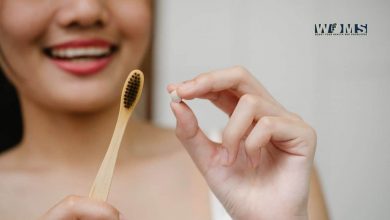The Tech Trap: How Electronic Equipment Affects Your Health and How to Combat It

The reliance on electronic devices has skyrocketed, especially for those working remotely and, in general, for our digital-focused world. While technology has made it possible for us to work efficiently from virtually anywhere, it has also introduced a range of health risks. These factors can significantly impact our well-being from electromagnetic field (EMF) exposure to the effects of blue light and the constant presence of Wi-Fi and Bluetooth signals. This article delves into the health issues associated with tech equipment and offers practical solutions to mitigate them.
EMF Exposure in the Home Office
Electromagnetic fields (EMFs) are invisible areas of energy, often referred to as radiation, associated with the use of electrical power and various forms of natural and man-made lighting. Common sources of EMFs in a home office include computers, Wi-Fi routers, smartphones, and other electronic devices. Prolonged exposure to EMFs can lead to a variety of health issues such as headaches, fatigue, and even sleep disturbances.
Solution: Reducing EMF exposure can be achieved through several practical steps:
- Use EMF Shields: These can be applied to devices like smartphones and laptops to block some of the radiation.
- Maintain Distance: Try to keep a reasonable distance from electronic devices when possible. For instance, don’t sit too close to your Wi-Fi router or laptop.
- Take Regular Breaks: Step away from your devices periodically throughout the day to minimize exposure.
Integrating these habits into your daily routine can help reduce the negative impacts of EMF exposure. Many remote workers experience disturbed sleep, which can be an EMF symptom that has a great impact on your health.
Blue Light and Its Impact on Eye Health and Sleep
Blue light, emitted by screens on computers, tablets, and smartphones, can have significant effects on your health. This type of light is known to contribute to digital eye strain, leading to symptoms like dry eyes, blurred vision, and headaches. Additionally, blue light can disrupt your sleep patterns by interfering with the production of melatonin, the hormone responsible for regulating sleep-wake cycles.
Solution: Protecting yourself from the harmful effects of blue light involves a few straightforward measures:
- Use Blue Light Filters: Many devices come with built-in blue light filters or “night mode” settings that reduce blue light emissions. You can also purchase external screen protectors designed to filter out blue light.
- Adjust Screen Settings: Lower the brightness of your screens and increase text size to reduce strain on your eyes.
- Reduce Screen Time Before Bed: Aim to minimize your exposure to screens at least an hour before going to bed to help your body produce melatonin naturally.
By implementing these strategies, you can alleviate the effects of blue light on your eyes and improve your sleep quality. Exposure to blue light can disrupt your sleep cycle, and disturbed sleep can be an EMF symptom that has a great impact on your health.
Health Risks of Wi-Fi and Bluetooth Devices
Wi-Fi and Bluetooth devices are ubiquitous in modern home offices, enabling seamless connectivity and communication. However, constant exposure to the signals they emit can pose health risks. Studies suggest that chronic exposure to wireless signals may increase stress levels, contribute to sleep disturbances, and potentially lead to other health issues.
Solution: Minimizing the health risks associated with Wi-Fi and Bluetooth devices can be done through simple adjustments:
- Use Wired Connections: Whenever possible, opt for wired internet connections. Ethernet cables provide a stable connection without the added radiation from Wi-Fi signals.
- Turn Off Devices When Not in Use: Switch off Wi-Fi routers, Bluetooth devices, and other electronics when they’re not needed, especially at night.
- Optimize Workspace Layout: Position your workspace in a way that maximizes distance from Wi-Fi routers and other wireless devices.
Taking these steps can help reduce your exposure to potentially harmful wireless signals. Chronic exposure to wireless signals can lead to various health issues, and disturbed sleep can be an EMF symptom that has a great impact on your health.
Managing Multiple Devices and Overstimulation
In a typical remote work environment, it’s common to use multiple devices simultaneously, such as a laptop, smartphone, and tablet. This constant interaction with technology can lead to sensory overload, mental fatigue, and other health issues. Overstimulation from multiple devices can also contribute to disrupted sleep patterns and increased stress levels.
Solution: To manage the effects of using multiple devices, consider the following tips:
- Implement Device-Free Times: Designate specific times during the day to step away from all electronic devices. Use this time to engage in non-digital activities, such as reading a book, exercising, or spending time outdoors.
- Organize Tasks: Plan your tasks to limit simultaneous device usage. Focus on one device at a time to reduce mental fatigue and improve concentration.
- Create a Balanced Tech-Life Routine: Establish a routine that balances work and personal time, ensuring you’re not constantly tethered to technology. Incorporate regular breaks and leisure activities into your daily schedule.
By creating a balanced routine and limiting device usage, you can mitigate the negative impacts of overstimulation. Using multiple devices at once can overstimulate your senses and contribute to disturbed sleep, which can be an EMF symptom that has a great impact on your health.
Balancing Technology Use for Better Health
As technology continues to play a central role in our daily lives, especially for those working remotely, it’s crucial to be aware of the health risks associated with prolonged use of electronic equipment. From EMF exposure to the effects of blue light and wireless signals, understanding these risks and taking proactive steps to mitigate them is essential for maintaining overall well-being.
Implementing practical solutions, such as reducing EMF exposure, using blue light filters, opting for wired connections, and managing device usage, can significantly improve your health and quality of life. By balancing technology use with healthy habits, you can enjoy the benefits of modern conveniences while minimizing potential health hazards.
By following these guidelines, you can create a healthier work environment and ensure that technology serves as a tool for productivity rather than a source of health problems. Remember, your well-being is paramount, and small changes can make a big difference in how you feel and function every day.




